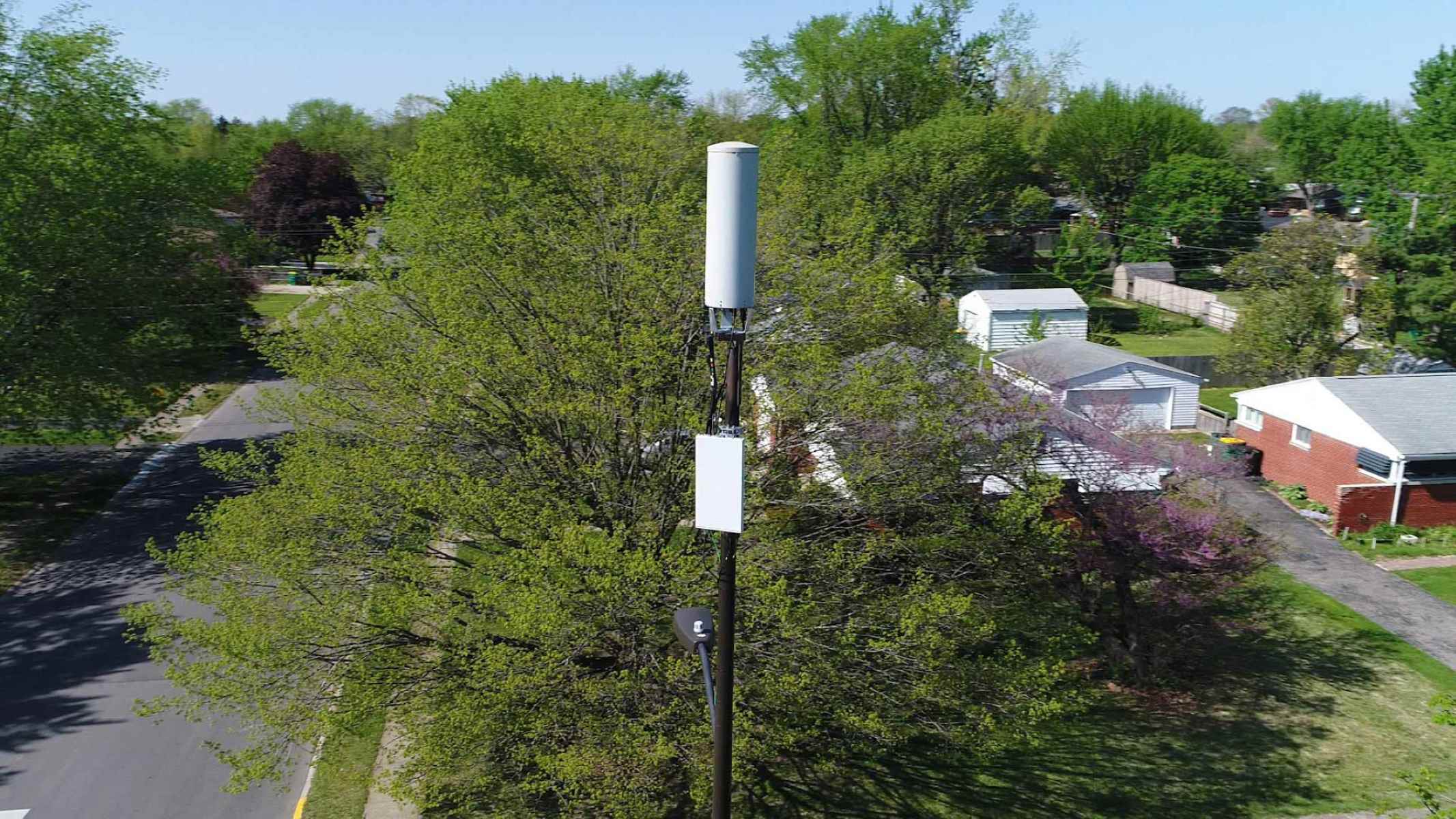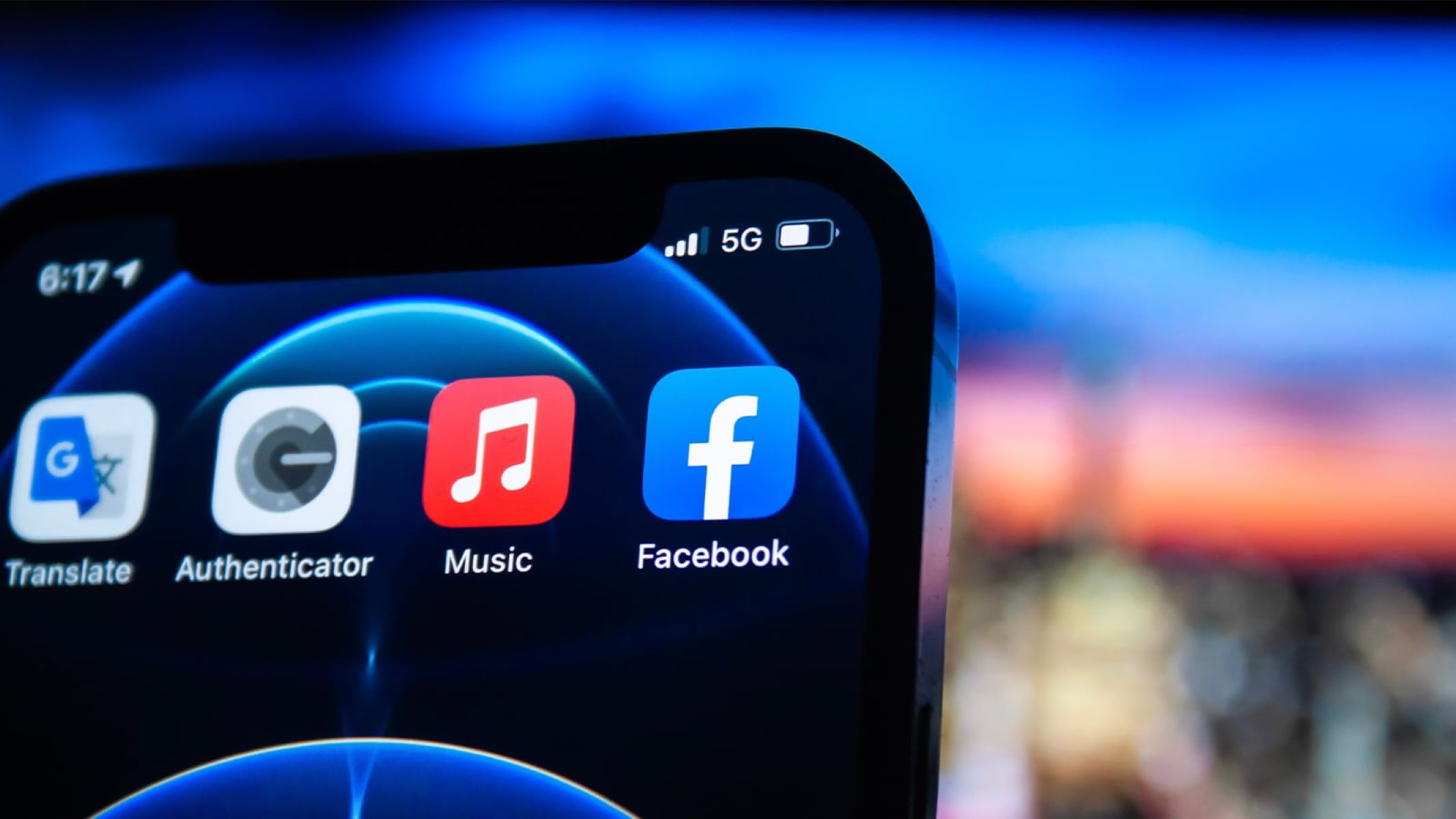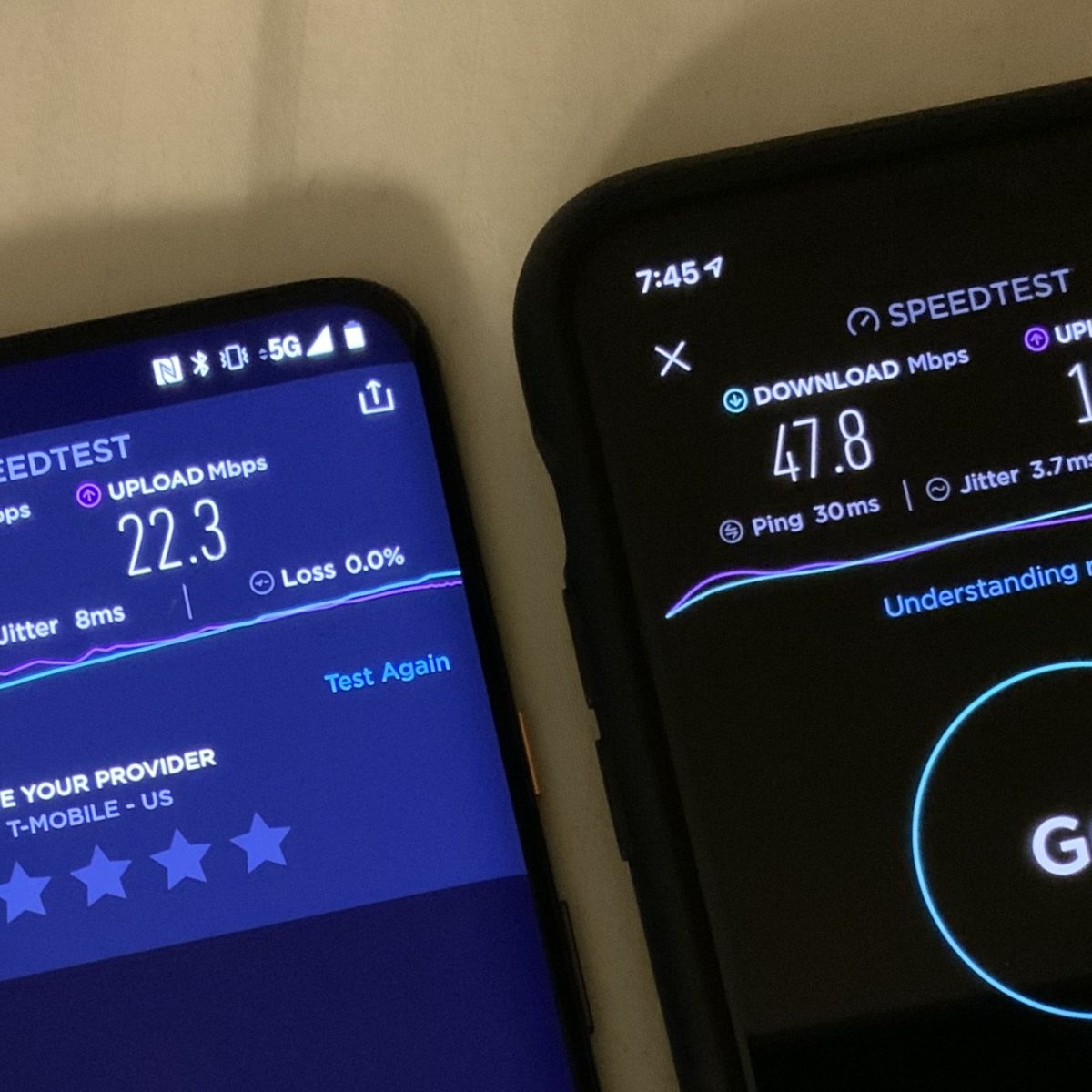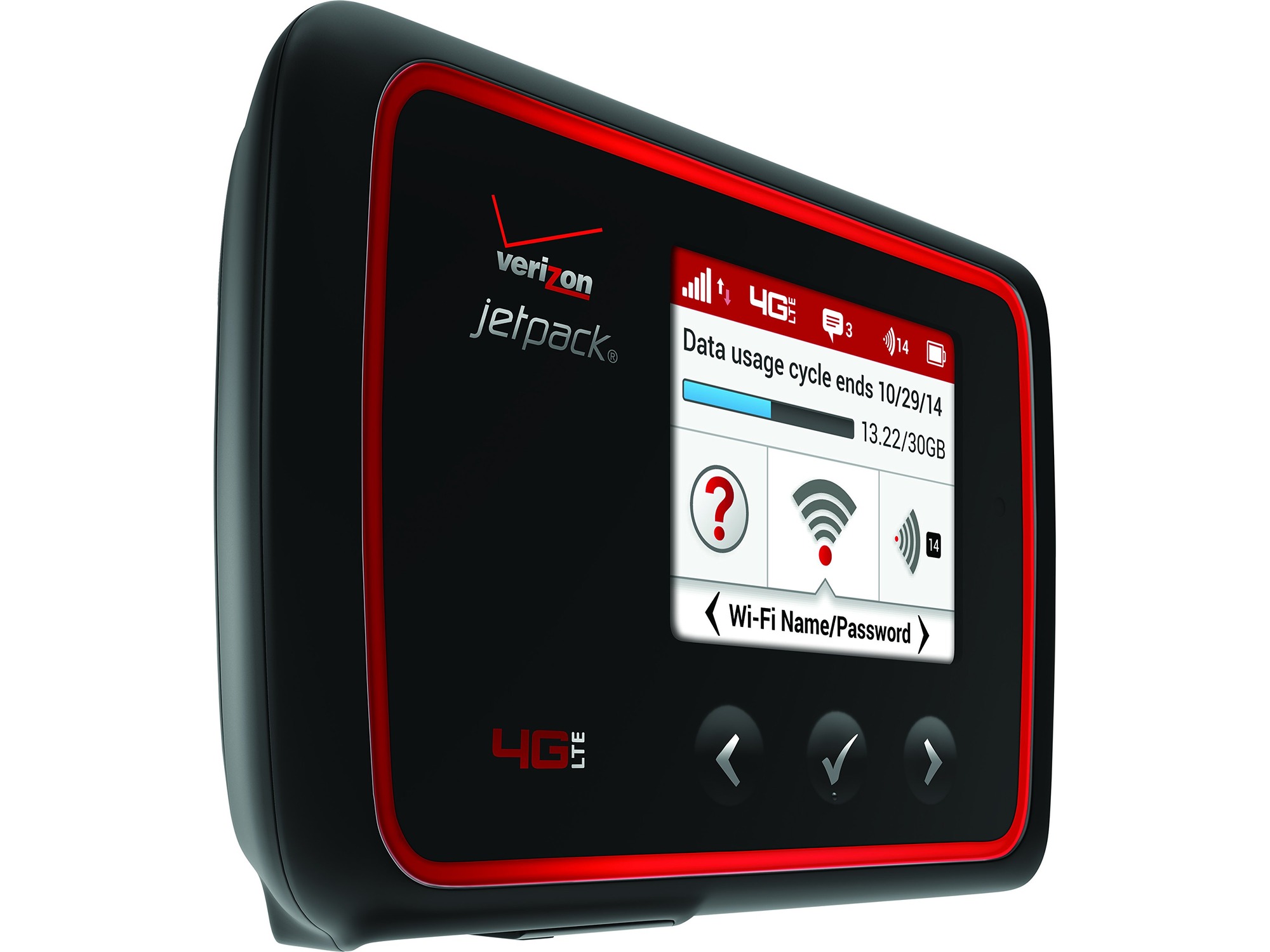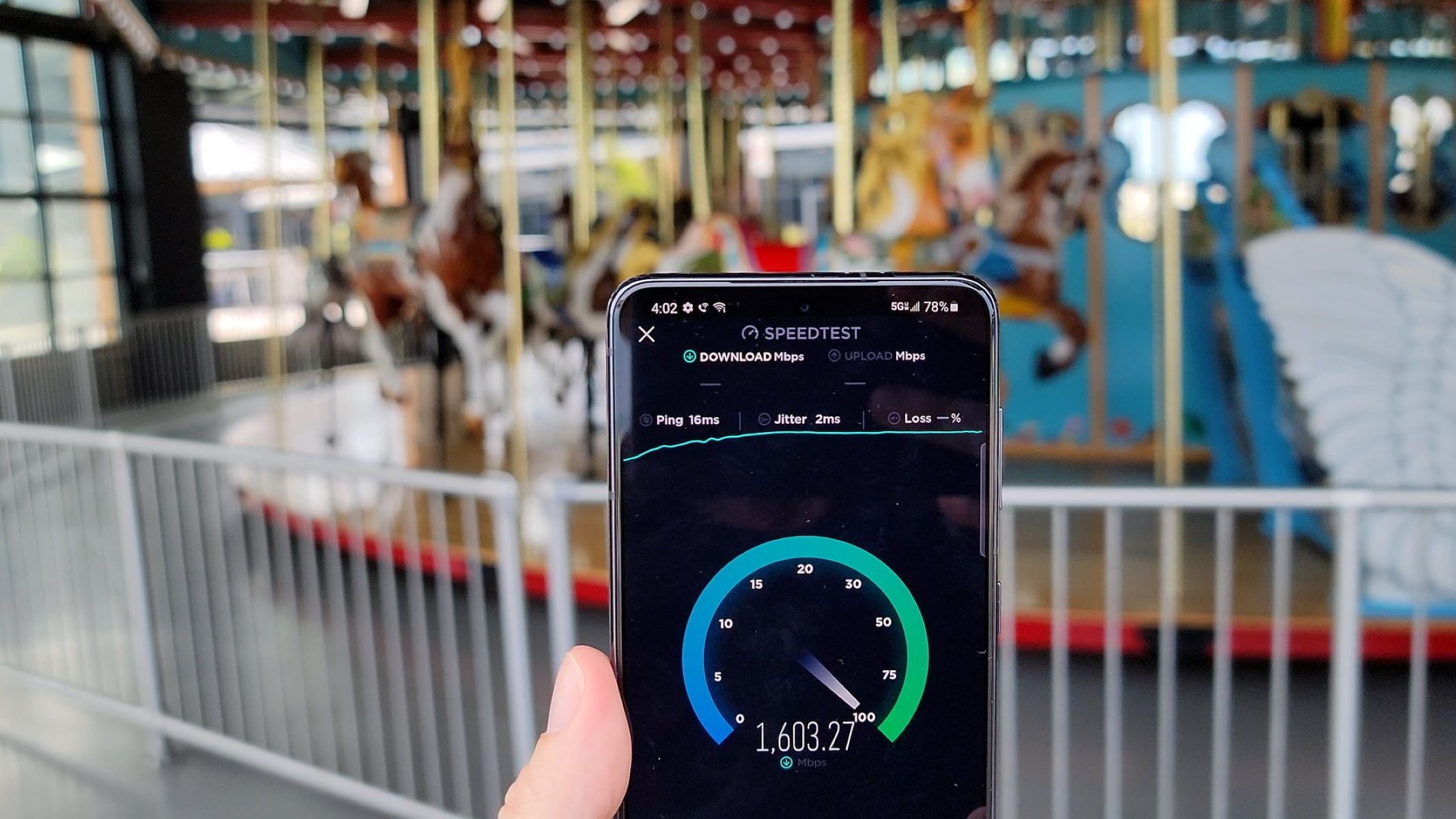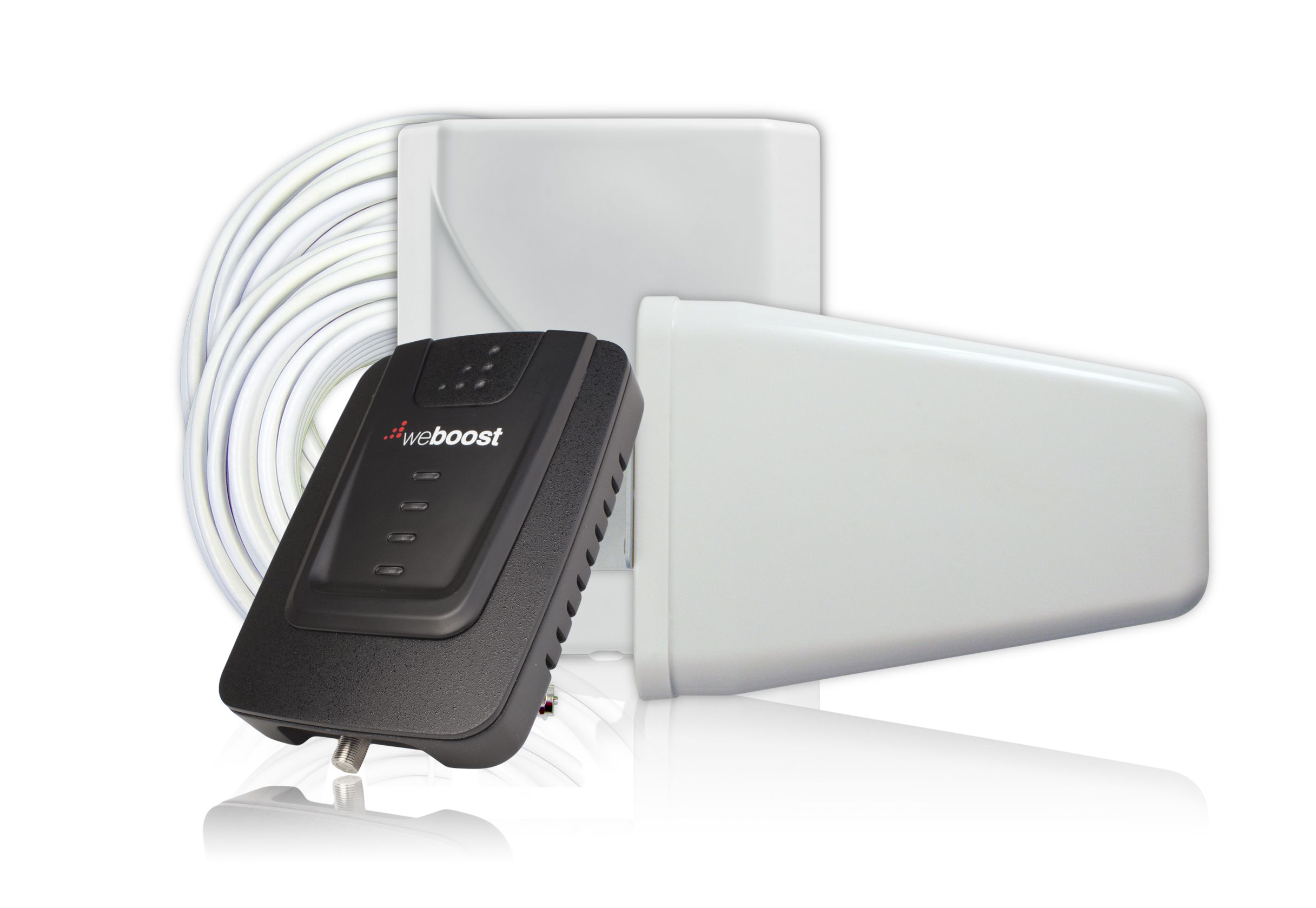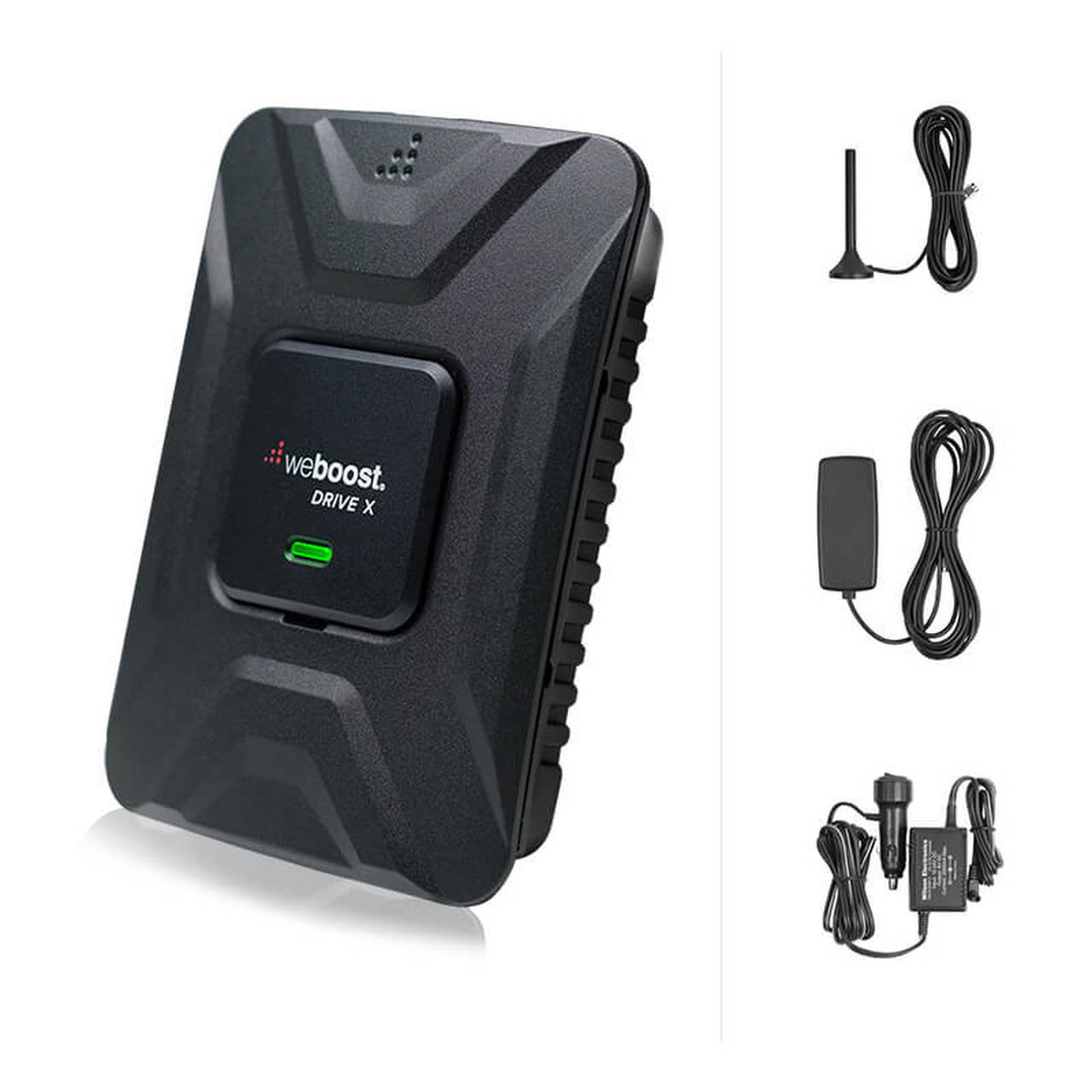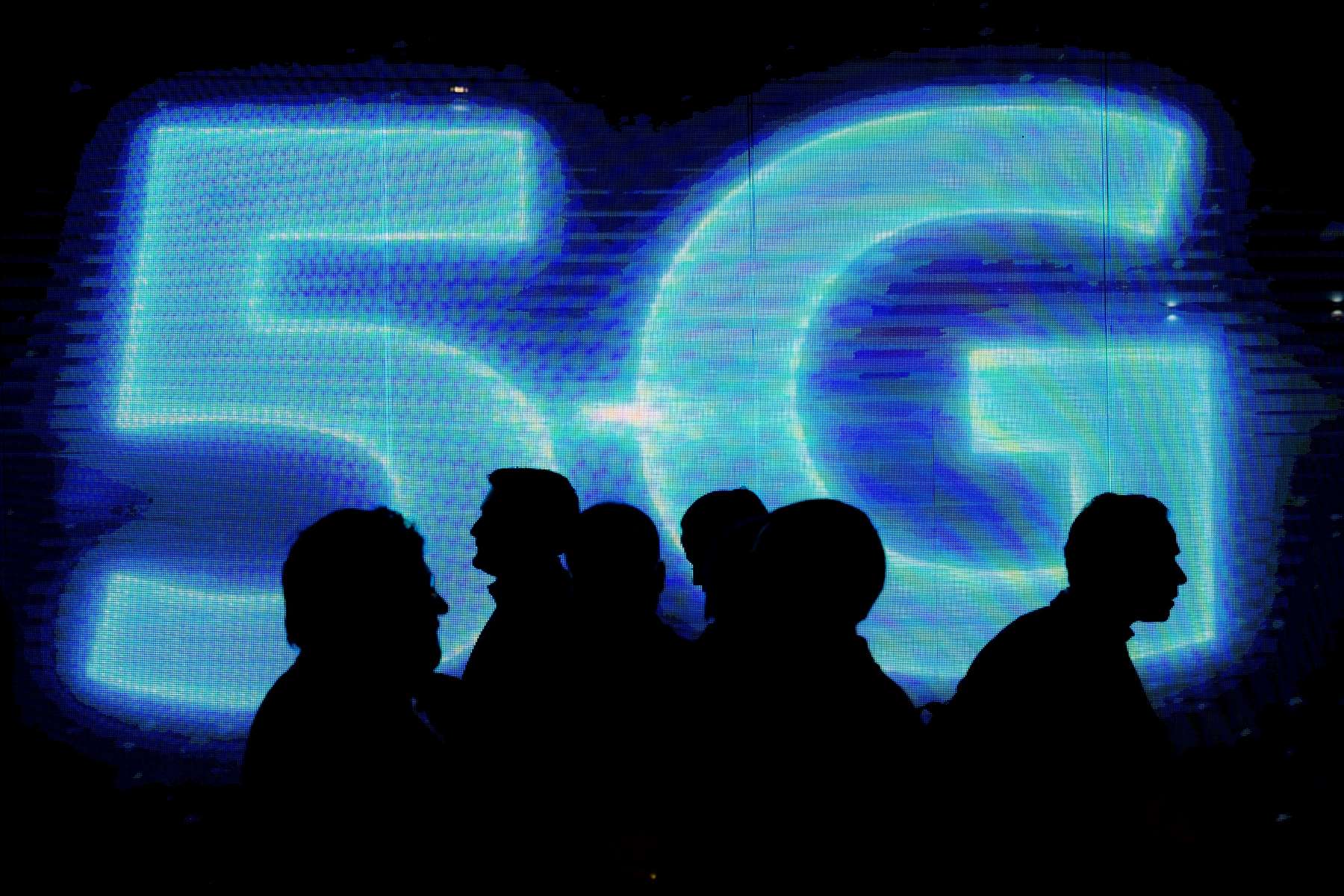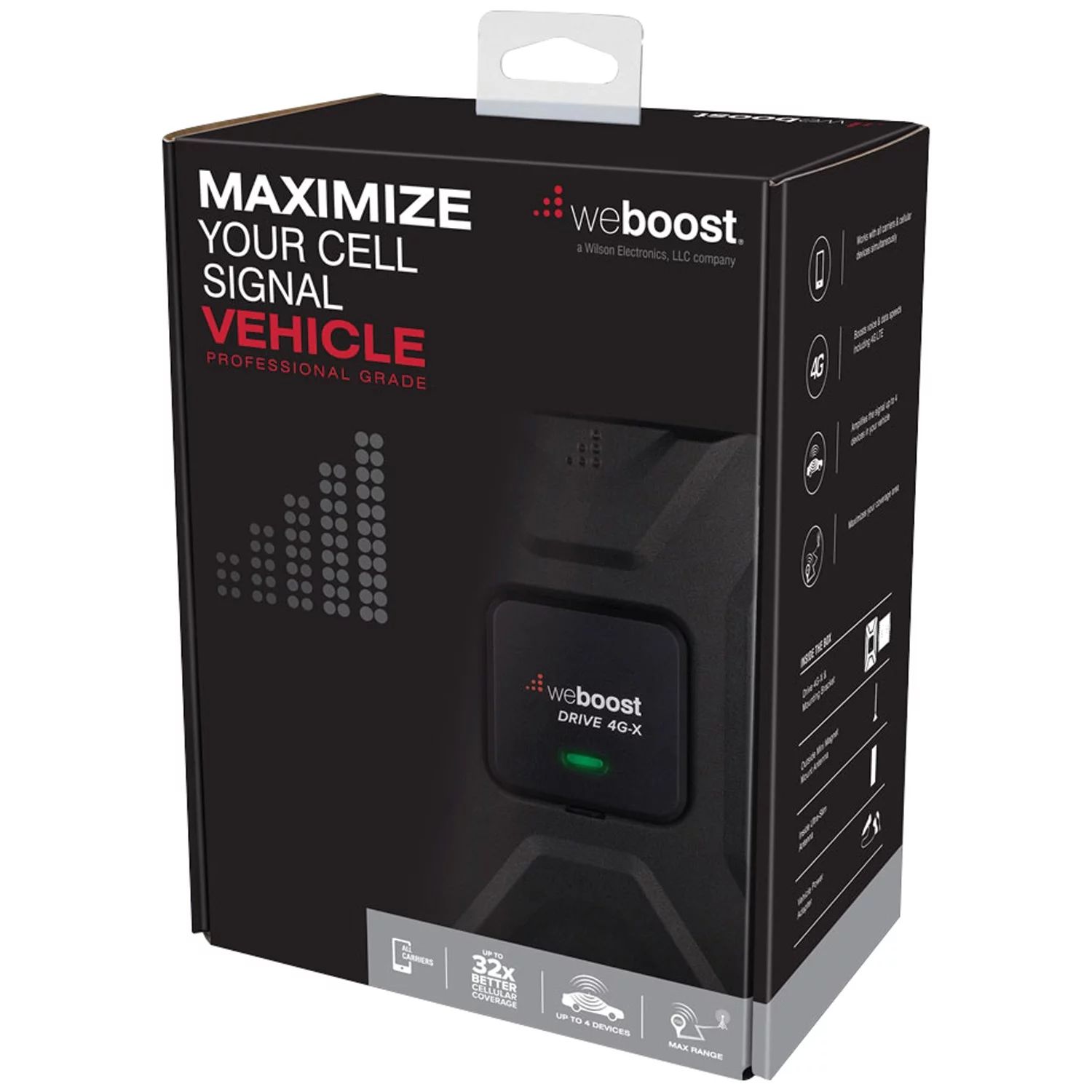Introduction
With the advancement of technology, the world has witnessed the emergence of the fifth-generation (5G) wireless network. Promising lightning-fast speeds, low latency, and the ability to connect a vast number of devices, 5G technology is set to revolutionize the way we communicate and interact with our surroundings.
But have you ever wondered how far 5G towers can actually reach? In this article, we will delve into the factors that impact the reach of 5G towers and explore the differences between urban and rural areas. Understanding the range of 5G towers is crucial in determining the feasibility of implementing this technology in different regions.
Before we delve into the specifics, let’s briefly discuss what 5G technology entails. 5G is the next generation of wireless technology that aims to provide faster speeds and greater capacity compared to its predecessors. It relies on higher radio frequencies and advanced antenna technologies to transmit data at unprecedented speeds.
Unlike 4G, which primarily operates using lower frequency bands, 5G utilizes a wider range of frequencies, including millimeter waves. These higher frequencies enable faster data transmission but come with certain challenges in terms of range and penetration.
What is 5G Technology?
5G technology refers to the fifth generation of wireless technology that is set to revolutionize our digital landscape. It represents a significant upgrade from previous generations, offering faster speeds, lower latency, and enhanced capacity to support a wide range of applications.
At its core, 5G technology is designed to provide faster and more reliable wireless connections. It achieves this through a combination of advanced antenna technology, increased bandwidth, and the use of higher frequency bands. By utilizing higher radio frequencies, known as millimeter waves, 5G networks can transmit data at extremely high speeds.
One of the key benefits of 5G technology is its ability to handle a massive number of connected devices simultaneously. This is crucial in the era of the Internet of Things (IoT), where various smart devices and sensors rely on a stable and high-speed network connection to function effectively.
Furthermore, 5G technology holds the promise of significantly reducing latency, or the delay in data transmission. This improvement is particularly important for applications that require real-time responses, such as augmented reality, virtual reality, and autonomous vehicles.
Compared to previous generations, 5G offers not only faster speeds but also greater reliability and stability. This is achieved through the utilization of advanced techniques such as beamforming, which allows signals to be focused and directed toward specific devices for optimal performance.
It is important to note that the deployment of 5G technology involves a significant infrastructure upgrade. This includes the installation of new 5G towers and base stations, as well as the implementation of advanced equipment to support the higher frequencies used by 5G networks.
Overall, 5G technology represents a major leap forward in wireless communication. Its faster speeds, lower latency, and increased capacity have the potential to transform industries, enable new technologies, and enhance our digital connectivity.
Understanding 5G Frequencies
One of the defining characteristics of 5G technology is the use of a wider range of frequencies compared to previous generations. 5G networks can operate on different frequency bands, each with its own set of advantages and limitations.
Low-band, mid-band, and high-band frequencies are the three primary frequency ranges used in 5G networks. Let’s take a closer look at each of these frequency bands:
1. Low-band Frequencies: Low-band frequencies typically range between 600 MHz to 900 MHz. They offer excellent coverage and can propagate over long distances. However, they have limited bandwidth capacity and do not provide the high-speed capabilities of other higher-frequency bands.
2. Mid-band Frequencies: Mid-band frequencies range from 2.5 GHz to 3.7 GHz. They strike a balance between coverage and capacity, offering higher speeds compared to low-band frequencies. Mid-band frequencies are currently considered the “sweet spot” for 5G deployment as they provide a good balance between coverage distance and data transmission speeds.
3. High-band Frequencies (Millimeter Waves): High-band frequencies, also known as millimeter waves, operate in the range of 24 GHz to 100 GHz. These frequencies offer incredibly fast speeds and massive capacity. However, they have a limited coverage area and are easily attenuated by obstructions such as buildings and trees.
Each frequency band has its advantages and limitations, and network operators choose the appropriate frequency based on the requirements of a particular area or application. Low-band frequencies are ideal for providing wide coverage in rural or suburban areas, whereas high-band frequencies are best suited for dense urban environments.
Understanding these diverse frequencies enables us to comprehend the different factors that affect the range of 5G towers. While low-band frequencies can transmit over considerable distances, high-band frequencies face challenges due to their limited coverage and susceptibility to obstacles.
By optimizing the use of these frequency bands and striking a balance between coverage and capacity, 5G technology can offer seamless connectivity and enable a wide range of innovative applications and services.
Factors Affecting 5G Tower Reach
Several factors contribute to the reach and coverage area of 5G towers. Understanding these factors is crucial in determining the feasibility and effectiveness of deploying 5G networks in different locations. Let’s explore some key factors that affect the reach of 5G towers:
1. Frequency Band: As mentioned earlier, different frequency bands have varying characteristics. Low-band frequencies have better range and can propagate over longer distances. On the other hand, high-band frequencies, such as millimeter waves, have limited coverage due to their susceptibility to obstructions and signal attenuation.
2. Power and Antenna Configuration: The power output and configuration of antennas play a significant role in the reach of 5G towers. Higher power output can extend the coverage area, but it may also result in increased interference and decreased network capacity. Optimized antenna configurations, such as beamforming and massive MIMO (Multiple Input, Multiple Output), can enhance coverage and capacity in specific directions.
3. Line-of-Sight and Obstacles: The presence of physical obstructions, such as buildings, trees, and natural terrain, can hinder the reach of 5G signals. Millimeter wave frequencies are particularly susceptible to obstacles, as they have limited ability to penetrate through solid objects. Line-of-sight between the tower and the connected devices is essential for optimal signal strength and coverage.
4. Atmospheric Conditions: Weather conditions can also impact the reach of 5G towers. Heavy rainfall, fog, and atmospheric moisture can attenuate and scatter the high-frequency millimeter wave signals, reducing their effectiveness and coverage distance.
5. Network Density: The number of 5G towers and their proximity to each other can affect the reach of the network. Dense deployment of towers in densely populated areas can result in better coverage and capacity, whereas sparse tower distribution may lead to coverage gaps and reduced network reach.
6. Interference and Noise: The presence of interference from other wireless devices or neighboring networks can impact the reach and performance of 5G towers. Proper regulatory measures and frequency coordination are necessary to minimize interference and ensure optimal network reach.
These factors combine to determine the reach and coverage area of 5G towers. By considering these factors during the planning and deployment of 5G networks, mobile operators and infrastructure providers can optimize coverage and deliver reliable and high-speed connectivity to users.
Line-of-Sight and Obstructions
Line-of-sight (LOS) refers to the unobstructed path between a 5G tower and the connected devices. The presence of obstructions can significantly impact the reach and signal strength of 5G networks. Let’s explore how line-of-sight and obstructions affect the performance of 5G towers:
1. Building Structures: Tall buildings and structures can block or weaken 5G signals. The higher the frequency of the signal, the more easily it is obstructed by buildings. Millimeter wave frequencies, in particular, have limited ability to penetrate through solid objects, making them highly susceptible to blockage by buildings or even foliage.
2. Trees and Foliage: Dense vegetation, such as trees and foliage, can obstruct and attenuate 5G signals. The leaves and branches of trees can cause signal scattering and absorption, reducing the signal strength and leading to decreased coverage areas. This is especially important to consider when deploying 5G networks in outdoor and suburban environments.
3. Terrain and Topography: Natural terrain features, such as hills, mountains, and valleys, can obstruct the line-of-sight between 5G towers and devices. The shape and elevation of the terrain can cause signal blockage or reflect the signal away from the desired coverage area. Careful consideration of the terrain is necessary when planning the placement of 5G towers to ensure optimal coverage.
4. Human-made Obstructions: Human-made obstructions like billboards, signage, and construction equipment can also hinder the reach of 5G signals. These obstructions can reflect or scatter the signals, causing signal degradation or interference, especially for high-band frequencies.
5. Distance from the Tower: The distance between a device and the 5G tower also affects the signal strength. As the distance increases, the signal weakens, resulting in reduced coverage and slower speeds. However, with advancements such as beamforming and MIMO technology, 5G networks can optimize the signal direction and coverage, mitigating the impact of distance to some extent.
Understanding the impact of line-of-sight and obstructions is crucial when planning the deployment of 5G networks. By considering the line-of-sight requirements and identifying potential obstructions, network operators can strategically position 5G towers to maximize coverage, minimize signal blockage, and ensure reliable connectivity.
5G Millimeter Wave Technology
Millimeter wave technology is a significant aspect of 5G networks, particularly in urban areas. It utilizes high-frequency bands in the range of 24 GHz to 100 GHz to transmit data at incredibly fast speeds. However, millimeter waves pose unique challenges and considerations compared to lower-frequency bands. Let’s explore the characteristics and implications of 5G millimeter wave technology:
1. Massive Bandwidth: Millimeter wave frequencies offer massive bandwidth, allowing for immense data transmission. This enables the delivery of ultra-high-definition video streaming, virtual reality experiences, and real-time applications with minimal latency.
2. Limited Coverage Area: Perhaps the most significant challenge of millimeter wave technology is its limited coverage area. Signals at these higher frequencies are easily absorbed by atmospheric moisture and attenuated by obstacles such as buildings and trees. This means that millimeter wave signals are more effective over shorter distances and require denser deployment of 5G towers to ensure coverage in urban areas.
3. Line-of-Sight Requirement: Due to the susceptibility of millimeter wave signals to blockage and absorption, maintaining a clear line-of-sight between the 5G tower and the connected devices is critical. Obstructions like buildings, trees, and even heavy rain can significantly impact signal strength and coverage.
4. Small Cell Deployment: To overcome the limited coverage area of millimeter wave technology, small cell deployment becomes crucial. Small cells are compact base stations that are strategically placed to supplement the coverage of the primary 5G tower. These small cells provide localized coverage in dense urban environments, ensuring that users can access high-speed 5G networks even in crowded areas.
5. Beamforming and MIMO: Beamforming and Multiple Input, Multiple Output (MIMO) technologies play a vital role in maximizing the performance and coverage of millimeter wave signals. Beamforming focuses the signal toward specific users, steering it around obstacles and interference, while MIMO utilizes multiple antennas to enhance data throughput and capacity.
While millimeter wave technology offers unprecedented speeds and capacity, it requires careful planning and deployment strategies. Network operators must navigate the challenges of limited coverage, line-of-sight requirements, and small cell deployment to ensure the robustness of 5G millimeter wave networks.
5G Tower Range in Urban Areas
In urban areas, 5G tower range is a crucial consideration due to the high population density, tall buildings, and complex infrastructure. The range of 5G towers in urban areas can be influenced by various factors, including frequency band, signal interference, and obstructions. Let’s explore the range of 5G towers in urban areas:
1. Frequency Band: The frequency band used by 5G technology plays a significant role in determining the tower’s range in urban areas. Low-band frequencies offer better coverage and can penetrate buildings more effectively. Mid-band frequencies strike a balance between coverage and capacity, while high-band millimeter wave frequencies have a limited reach due to their susceptibility to obstacles and signal absorption.
2. Signal Interference: In urban areas, the presence of numerous wireless devices and networks can result in signal interference. Interference can degrade the quality and range of 5G signals, impacting the tower’s reach. Proper frequency coordination and interference mitigation techniques are essential to optimize signal performance in congested urban environments.
3. Building Structures: Tall and dense buildings in urban areas can obstruct and weaken 5G signals. The signal strength and coverage distance can be significantly affected by the presence of these structures. Millimeter wave frequencies, in particular, have limited ability to penetrate buildings, necessitating the deployment of small cells and additional 5G infrastructure to ensure coverage in urban environments.
4. Small Cell Deployment: Due to the limited coverage area of high-band millimeter wave frequencies, small cell deployment becomes crucial in urban areas. Small cells are distributed throughout the urban landscape to provide localized coverage and enhance the reach and capacity of 5G networks. These cells are strategically placed to fill coverage gaps and ensure a consistent and reliable connection for users in crowded areas.
5. Obstacles and Reflections: Urban environments are filled with various obstructions that can impact the range of 5G towers. Buildings, trees, and other structures can cause signal blockage, absorption, and reflections, resulting in signal degradation. Careful site planning and antenna placement can help minimize the impact of these obstructions and optimize the tower’s range.
Optimizing the range of 5G towers in urban areas requires a comprehensive understanding of the unique challenges and considerations brought by the environment. By selecting appropriate frequency bands, deploying small cells, mitigating interference, and strategically planning tower placement, network operators can expand the reach of 5G technology in urban settings and provide seamless connectivity to users.
5G Tower Range in Rural Areas
In rural areas, the range of 5G towers plays a critical role in providing reliable and high-speed connectivity to remote communities. However, the unique characteristics of rural environments, such as large distances, sparse population, and natural landscapes, present distinct challenges for 5G tower range. Let’s explore the considerations and factors affecting 5G tower range in rural areas:
1. Low-band Frequencies: Low-band frequencies, such as those below 1 GHz, have better range and can propagate over longer distances. These frequencies are suitable for providing wide coverage in rural areas where population density is low. They can reach remote locations and serve communities that are far away from the 5G tower.
2. Tower Placement: In rural areas, where the population is scattered and distances between communities are significant, careful tower placement is vital to ensure optimal coverage. Placing towers strategically in locations that provide the most coverage and minimize signal loss due to terrain or obstructions is crucial to extend the range of 5G towers.
3. Line-of-Sight and Obstructions: While rural areas may not have as many tall buildings as urban areas, natural obstructions such as hills, mountains, and dense vegetation can still impact 5G signal reach. Ensuring a clear line-of-sight between the tower and connected devices helps minimize signal loss and maximize the range in rural landscapes.
4. Sparse Population Density: The low population density in rural areas poses a unique challenge for 5G tower range. To provide cost-effective coverage, towers must have a longer reach to serve a larger geographical area with a smaller number of users. Extending the range of towers, coupled with technologies like beamforming and higher antenna gain, can help overcome this challenge.
5. Backhaul Connectivity: Rural areas often lack reliable fiber optic or wired connectivity for backhaul, which is essential for optimal 5G tower performance. Innovative solutions, such as the use of wireless backhaul or satellite links, can help overcome this limitation and ensure seamless connectivity in rural environments.
6. Power Constraints: Power availability can be a challenge in rural areas. Ensuring a stable and sufficient power supply to 5G towers is critical for their range and functionality. Employing energy-efficient technologies and exploring alternative power sources can help address these constraints and extend the reach of 5G towers.
Expanding the range of 5G towers in rural areas requires a combination of strategic tower placement, efficient frequency selection, and innovative connectivity solutions. By overcoming the challenges posed by distance, sparse population, and natural landscapes, 5G technology can bridge the digital divide and provide reliable connectivity to rural communities.
Impact of Building Materials
The choice of building materials used in urban and rural areas can significantly impact the range and performance of 5G towers. Different building materials possess varying characteristics in terms of signal penetration, reflection, and absorption. Understanding the impact of building materials is crucial for optimizing 5G tower range and ensuring seamless connectivity. Let’s explore the impact of building materials on 5G tower performance:
1. Concrete and Brick: Concrete and brick are commonly used construction materials that can impede the transmission of 5G signals. These dense materials have a significant impact on signal attenuation, causing signal degradation and reducing the range of 5G towers. In densely built urban areas, the prevalence of concrete and brick structures necessitates deploying additional small cells to overcome signal loss and ensure coverage.
2. Glass: Glass is a commonly used material in windows and facades of buildings. While glass is transparent to radio frequencies and allows signals to pass through, it can weaken the signal strength due to its reflective properties. In high-rise buildings with extensive glass exteriors, signal reflections can impact the range and coverage of 5G towers. Implementing antenna placement strategies that mitigate reflections and interference enables improved performance.
3. Wood and Drywall: Wood and drywall are less obstructive materials compared to concrete and brick. They have less impact on signal attenuation and allow for better signal penetration. However, excessive use of wood or drywall in buildings can still hinder signal propagation to some extent. It is important to consider the combination of building materials used to construct structures to accurately estimate the range of 5G towers in these areas.
4. Metal: Metal surfaces can significantly impact 5G signal reach. They reflect and potentially block signals, resulting in signal loss and reduced coverage area. Metal-clad or metal-framed buildings can cause shadowing effects, where the signals are weakened or blocked on the side facing the building. Optimizing antenna placement and utilizing beamforming techniques can help minimize the impact of metal obstructions and improve the range of 5G towers.
5. Reflective Coatings: Some buildings incorporate reflective coatings, such as metallic or energy-efficient coatings, on their surfaces. While these coatings offer energy-saving benefits, they can also impact the range and performance of 5G signals. The reflective nature of these coatings can lead to signal reflections and interference, affecting the signal strength and coverage of 5G towers.
Considering the impact of building materials allows network operators and infrastructure providers to develop effective strategies for optimizing 5G tower range. By employing advanced antenna technologies, implementing strategic site planning, and minimizing the impact of materials on signal propagation, 5G networks can offer reliable and high-speed connectivity in diverse urban and rural environments.
How to Improve 5G Tower Reach
Improving the reach of 5G towers is essential to provide seamless connectivity and optimal performance. By implementing certain strategies and deploying advanced technologies, network operators can enhance the range and coverage of 5G towers. Let’s explore some ways to improve 5G tower reach:
1. Strategic Tower Placement: Careful consideration of tower placement can significantly improve the reach of 5G towers. Identifying elevated locations and areas with a clear line-of-sight to the desired coverage area can minimize signal blockage and interference. Optimizing tower positioning based on terrain features and population distribution ensures wider coverage and greater reach.
2. Optimal Frequency Selection: Selecting the appropriate frequency band is crucial to improve 5G tower reach. Low-band frequencies can travel over greater distances, making them ideal for providing coverage in rural areas. Mid-band frequencies strike a balance between coverage and capacity, while high-band frequencies offer higher data transfer rates but have limited coverage range. Tailoring frequency band selection to the specific deployment area can enhance the reach of 5G towers.
3. Advanced Antenna Technologies: Implementing advanced antenna technologies, such as beamforming and multiple-input multiple-output (MIMO), can improve the range and efficiency of 5G towers. Beamforming focuses the signal toward specific devices or areas, maximizing signal strength and coverage. MIMO uses multiple antennas to enhance data throughput and capacity. These technologies enhance both coverage and capacity, resulting in improved 5G tower reach.
4. Small Cell Deployment: Deploying small cells alongside 5G towers can extend coverage and enhance reach, particularly in dense urban areas. Small cells act as complementary base stations, providing localized coverage and filling coverage gaps. Distributing small cells strategically helps increase the range of 5G towers, ensuring reliable connectivity in challenging environments.
5. Backhaul Connectivity: Reliable and efficient backhaul connectivity is essential for optimal 5G tower performance. High-capacity fiber optic or wireless backhaul connections enable faster data transfer between the tower and the core network. Ensuring sufficient backhaul connectivity minimizes latency and improves the reach and reliability of 5G towers.
6. Overcoming Obstructions: Identifying and mitigating obstructions, such as buildings, trees, and other structures, is crucial for improving 5G tower reach. Employing technologies like beamforming, which can steer the signal around obstacles, helps overcome signal blockage and enhances coverage. Conducting thorough site surveys and utilizing advanced antenna placement techniques can optimize 5G tower reach.
7. Power Optimization: Ensuring stable and sufficient power supply to 5G towers is vital for improved reach. Implementing energy-efficient practices and exploring alternative power sources minimize downtime and enable wider coverage in remote and challenging environments.
By implementing these strategies, network operators can improve the reach and coverage of 5G towers, ensuring that users have seamless connectivity and access to the full potential of 5G technology.
Conclusion
5G technology offers tremendous potential to revolutionize our digital connectivity, enabling faster speeds, lower latency, and greater capacity. However, understanding the factors that affect the range and reach of 5G towers is crucial in ensuring the optimal deployment and performance of this technology.
Factors such as frequency band, line-of-sight, obstructions, and building materials play a significant role in determining the range of 5G towers. Low-band frequencies provide better coverage in rural areas, while mid-band and high-band frequencies offer higher speeds but have limitations in reach. Line-of-sight between the tower and connected devices is crucial for optimal signal strength, and obstructions such as buildings and trees can hinder signal propagation.
In urban areas, small cell deployment and strategic tower placement are vital for improving coverage and capacity. The impact of building materials, such as concrete, glass, and metal, must be considered to mitigate signal loss and reflection. In rural areas, tower placement in remote locations, optimized frequency selection, and efficient backhaul connectivity help maximize coverage in sparsely populated regions.
Implementing advanced technologies like beamforming and MIMO, along with optimizing power efficiency, can enhance 5G tower reach. Overcoming challenges such as signal interference and obstructions through careful planning and innovative solutions is essential to ensure reliable connectivity.
By considering these factors and implementing effective strategies, network operators can ensure that 5G towers provide seamless connectivity, improve digital accessibility, and unlock the full potential of 5G technology for individuals and industries.







